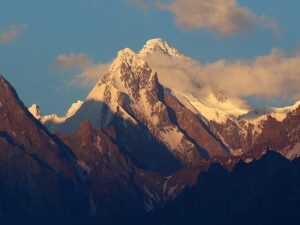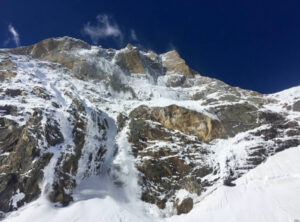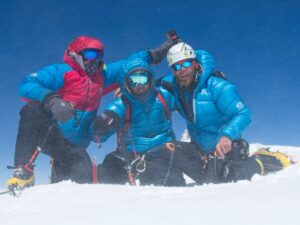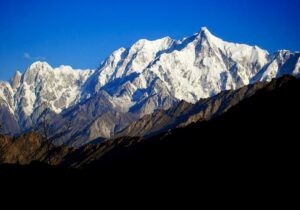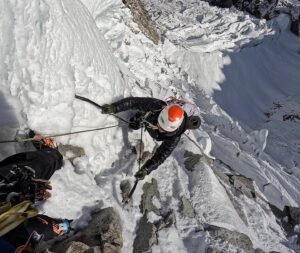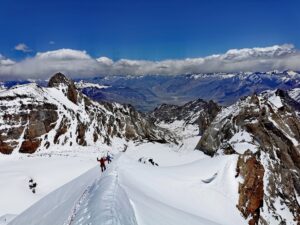The Pakistan season is heating up, but we didn’t want to miss the chance to share a final report on one of the most remarkable climbs of the Himalaya spring season: the ascent of Changabang’s West Wall.
It was not a first ascent or a new route, yet repeating this mythical line for the first time since Boardman and Tasker 46 years ago is no small feat. In those 46 years, some 20 teams had tried the route and failed.
The route goes up the rocky west face of Changabang, a 6,864m peak in the Garhwal Himalaya. The three-man team climbed in a single push, alpine-style ascent from Base Camp.

The west face of Changabang, Garhwal Himalaya. Photo: New Zealand Alpine Team
Summiteers Matthew Scholes, Kim Ladiges, and Daniel Joll, all members of the New Zealand Alpine Team, have now posted a long, detailed report and shared their expedition diary. The article, published by Joll, describes the climb as “the coldest, hardest days,” of his climbing career. Only the team’s commitment to each other pushed them to keep going through all the hardships. As he recalls:
The only way to cope was to focus on one day at a time…We reminded each other not to think too far ahead. None of us thought we would summit. We never imagined it could be possible until the final one hundred metres.
Lessons in teamwork

Changabang summit selfie. Photo: Daniel Joll
Joll revealed that they took shifts and led one day each in rotation. This put quite a lot of pressure on the lead climber. “It was paramount for each of us not to fail the others on our allocated day,” he said.
They were also coordinated to set up each camp, melt snow for water, haul gear, etc. Overall, it was a lesson on big wall climbing efficiency. Their success demonstrates the team’s excellent training and explains why, in these increasingly individualistic times, routes like this are so rarely attempted, let alone achieved.

Matthew Scholes and Daniel Joll in a portaledge. Photo: Kim Ladiges
I have always believed that the right pairing of climbing partners on the right day is potentially unstoppable on a mountain…It took a while for me to get that my success on an expedition had more to do with my partners than my own ability, but once this clicked, I set about building a collection of long term climbing partners who, in a strong collaborative way, would help me realise my climbing goals, along with their own.
The three men had been preparing for the challenge for two years. Joll and Ladiges were long-time climbing partners who had joined forces on big walls around the globe, from Nepal to Alaska. Scholes had originally wanted to climb an 8,000’er but changed his mind to join his friends.
Pure alpine style
The team acclimatized directly on the route. “This meant we could afford to move slowly and at various points of the ascent we would spend two nights at the same camp,” Joll explained. Sometimes they would just move 200m to 300m up the wall before stopping, and that strategy worked fine.
Boardman and Tasker’s book, The Shining Mountain, stated that the route lacked good bivy spots, so the Kiwis took two portaledges, a tent, plenty of climbing gear, food, and gas for ten days, which they patiently hauled up the face.
Before the climb, the team had to haul all this gear up the glacier and to the base of the face; they needed seven exhausting days for the task.

Photo: Kim Ladiges
Slowly up, quickly down
After some rest days in Base Camp and a final haul to Advanced Base Camp (ABC), the team set off on April 25. They reached the summit at 11 am on May 2. A race against approaching storms followed. The climbers hurried back to ABC, arriving at 7 pm on May 3. “Lost in a white out and completely poked, we were running on fumes,” they said.
Those interested should read the whole story in their expedition diary, which was texted from Joll’s cellphone as they climbed.

The job was not over after getting safely down to ABC. They had to carry everything back down the glacier, including some double-pack loads. Photo: Matthew Scholes

